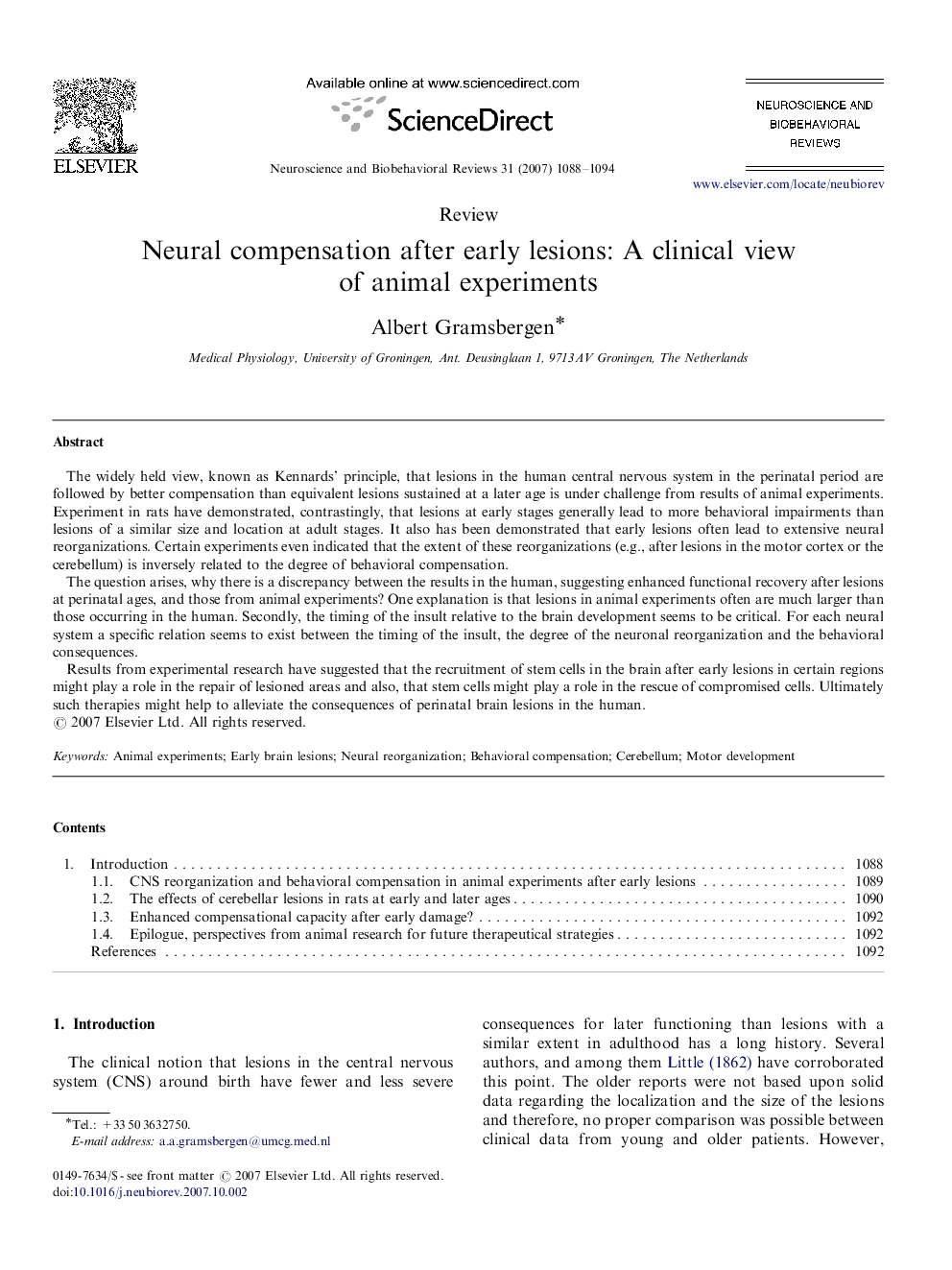| Article ID | Journal | Published Year | Pages | File Type |
|---|---|---|---|---|
| 938238 | Neuroscience & Biobehavioral Reviews | 2007 | 7 Pages |
The widely held view, known as Kennards’ principle, that lesions in the human central nervous system in the perinatal period are followed by better compensation than equivalent lesions sustained at a later age is under challenge from results of animal experiments. Experiment in rats have demonstrated, contrastingly, that lesions at early stages generally lead to more behavioral impairments than lesions of a similar size and location at adult stages. It also has been demonstrated that early lesions often lead to extensive neural reorganizations. Certain experiments even indicated that the extent of these reorganizations (e.g., after lesions in the motor cortex or the cerebellum) is inversely related to the degree of behavioral compensation.The question arises, why there is a discrepancy between the results in the human, suggesting enhanced functional recovery after lesions at perinatal ages, and those from animal experiments? One explanation is that lesions in animal experiments often are much larger than those occurring in the human. Secondly, the timing of the insult relative to the brain development seems to be critical. For each neural system a specific relation seems to exist between the timing of the insult, the degree of the neuronal reorganization and the behavioral consequences.Results from experimental research have suggested that the recruitment of stem cells in the brain after early lesions in certain regions might play a role in the repair of lesioned areas and also, that stem cells might play a role in the rescue of compromised cells. Ultimately such therapies might help to alleviate the consequences of perinatal brain lesions in the human.
